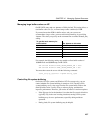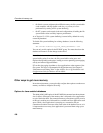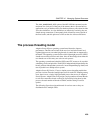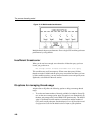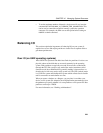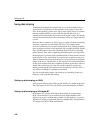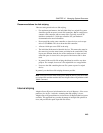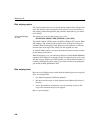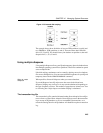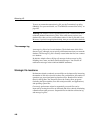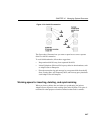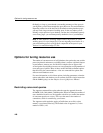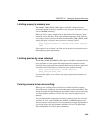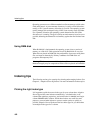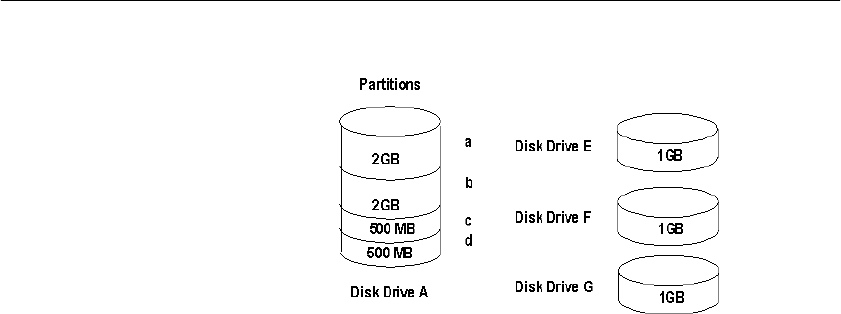
CHAPTER 12 Managing System Resources
445
Figure 12-3: Internal disk striping
The example above shows disk drive A has two 2GB partitions (a and b) and
two 500MB (or .5GB) partitions (c and d). There are three other 1GB disk
drives (E, F, and G). You should create your database on partition a, then add
dbspaces for E, c, F, b, G and d.
Using multiple dbspaces
Using multiple dbspaces allows your IQ and temporary data to be broken down
into multiple operating system files or partitions. These files can then be spread
across multiple disks.
Like disk striping, randomness can be created by placing successive database
files across multiple drives. You can create additional segments for your IQ and
temporary data with the
CREATE DBSPACE command.
When to create
dbspaces
When possible, allocate all dbspaces when you create a database.
If you add dbspaces later, IQ stripes new data across both old and new
dbspaces. Striping may even out, or it may remain unbalanced, depending on
the type of updates you have. The number of pages that are “turned over” due
to versioning has a major impact on whether striping is rebalanced.
The transaction log file
The transaction log file contains information that allows Adaptive Server IQ to
recover from a system failure. Adaptive Server IQ does not use the transaction
log to restore an IQ database, to recover committed IQ transactions, or to
restore the Catalog Store for an IQ database. All databases require a transaction
log.



